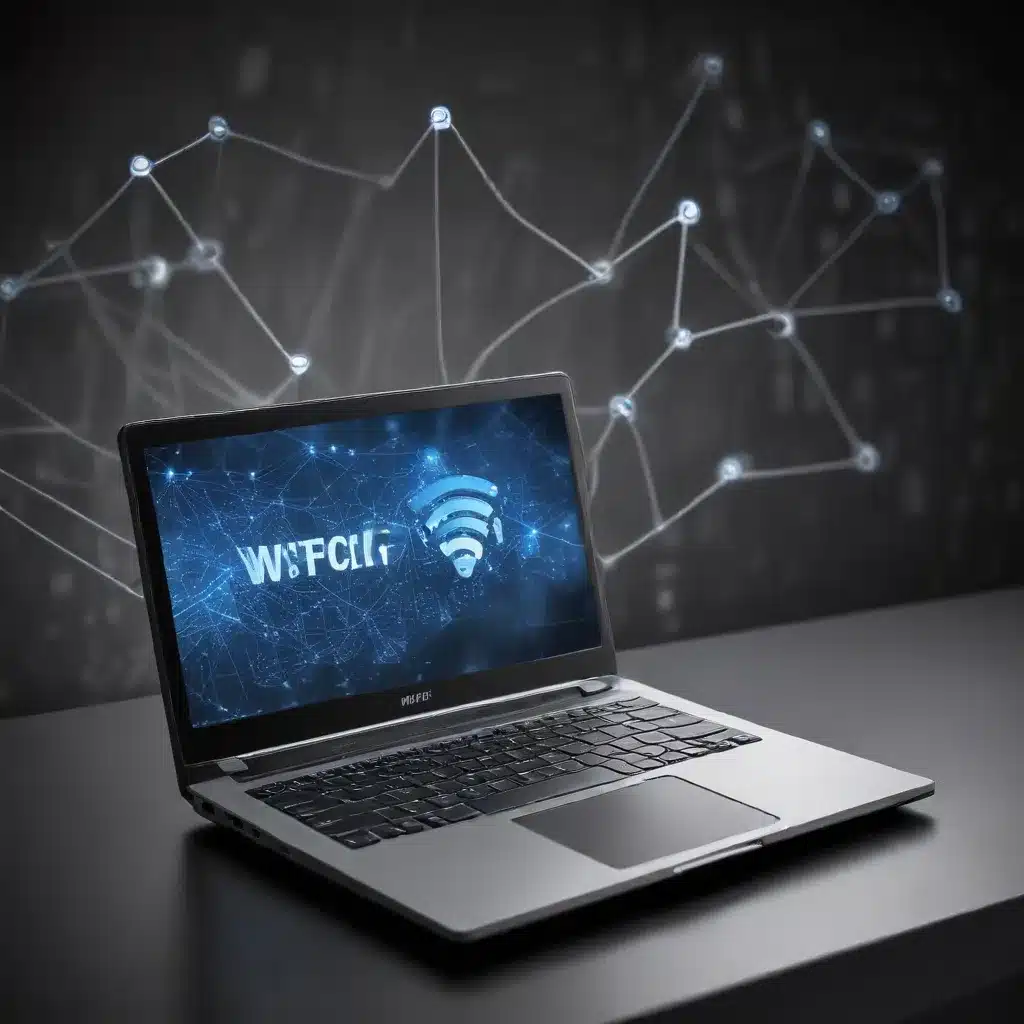
In today’s fast-paced digital landscape, reliable and high-performing network connectivity has become a critical necessity, especially for those working or studying from home. As an experienced IT professional, I’m here to share practical tips and in-depth insights to help you optimize your laptop’s networking capabilities and ensure seamless Wi-Fi connectivity, no matter the demands on your home network.
Assessing Your Wi-Fi Environment
The first step in optimizing your laptop’s networking performance is to evaluate the overall Wi-Fi environment in your home or office. Consider the following factors:
Positioning and Placement
The location of your Wi-Fi router or access point can have a significant impact on the strength and coverage of your wireless signal. Ideally, position the router in a central, unobstructed area of your space to ensure maximum reach and minimized interference from walls, furniture, or other obstacles.
Channel Selection
Your Wi-Fi router or access point operates on a specific wireless channel, and selecting the right channel can make a noticeable difference in performance. Use a Wi-Fi analyzer tool to identify the least congested channel in your area and configure your router accordingly.
Interference Sources
Certain household devices, such as microwaves, cordless phones, or even neighboring Wi-Fi networks, can create interference and degrade your wireless signal. Try to identify and minimize the impact of these potential sources of interference.
Device Placement
The location of your laptop within your home or office can also affect its Wi-Fi performance. Avoid placing your laptop in corners, near thick walls, or in areas with high foot traffic, as these can obstruct or weaken the wireless signal.
Optimizing Your Laptop’s Wi-Fi Settings
Once you’ve assessed your Wi-Fi environment, it’s time to dive into the settings and configurations of your laptop to ensure optimal networking performance.
Wireless Network Mode
Depending on the capabilities of your laptop and the Wi-Fi router, you may be able to select the wireless network mode that provides the best balance of speed and reliability. Consider experimenting with different modes, such as 802.11ac or 802.11ax (Wi-Fi 6), to find the one that works best for your setup.
Channel Width
Adjusting the channel width of your wireless network can have a significant impact on performance. Wider channels (e.g., 40 MHz or 80 MHz) generally offer faster speeds, but may be more susceptible to interference in crowded Wi-Fi environments. Experiment with different channel width settings to find the sweet spot.
Wireless Band Selection
Most modern Wi-Fi routers and laptops support both 2.4 GHz and 5 GHz wireless bands. The 5 GHz band typically provides faster speeds and lower latency, but has a shorter range compared to 2.4 GHz. Consider your specific needs and the layout of your environment to determine the optimal band for your laptop.
Power Saving Mode
Many laptops come equipped with power-saving features that can inadvertently limit wireless performance. Ensure that your laptop’s power settings are configured to prioritize networking performance over power conservation, especially when working on resource-intensive tasks.
Network Card Drivers
Keeping your laptop’s network card drivers up-to-date can significantly improve wireless performance. Regularly check with your laptop manufacturer or the network card vendor for the latest driver updates and install them promptly.
Enhancing Wireless Performance with External Accessories
In some cases, your laptop’s built-in Wi-Fi capabilities may not be sufficient to meet your connectivity needs. In such scenarios, consider investing in external accessories to boost your wireless performance.
Wi-Fi Extenders or Mesh Systems
If you have areas in your home or office with poor Wi-Fi coverage, you can deploy Wi-Fi extenders or mesh networking systems to extend the reach of your wireless signal. These devices work by creating a seamless, extended network that can provide reliable connectivity throughout your space.
Wireless Network Adapters
For laptops with older or underperforming network cards, you can upgrade to a high-performance wireless network adapter. These external USB or PCIe-based adapters often offer faster speeds, better range, and more advanced features than the built-in options.
Antennas and Signal Boosters
In some cases, you may be able to improve your laptop’s wireless performance by connecting an external antenna or signal booster. These accessories can help amplify the wireless signal, particularly in areas with weak coverage or high interference.
Maintaining and Troubleshooting Your Laptop’s Wi-Fi Connectivity
To ensure the longevity and optimal performance of your laptop’s networking capabilities, it’s essential to maintain and troubleshoot your Wi-Fi connection regularly.
Firmware and Driver Updates
Keeping your Wi-Fi router’s firmware and your laptop’s network card drivers up-to-date is crucial. Manufacturers often release updates to address security vulnerabilities, improve performance, and add new features.
Rebooting and Resetting
If you encounter persistent connectivity issues, try rebooting your laptop and your Wi-Fi router. In some cases, a simple reset may help resolve any temporary glitches or conflicts.
Network Diagnostics
Utilize built-in network diagnostic tools, such as the Windows Network Troubleshooter or macOS’s Wireless Diagnostics, to identify and address any underlying issues with your laptop’s Wi-Fi connection.
Professional Support
If you’ve exhausted all troubleshooting options and are still experiencing persistent networking problems, don’t hesitate to seek the assistance of a qualified IT professional. They can provide expert guidance and help you identify and resolve any complex issues.
Conclusion
Optimizing your laptop’s networking capabilities and Wi-Fi connectivity is essential for seamless productivity, whether you’re working remotely, studying, or engaging in multimedia activities. By following the tips and insights outlined in this article, you can ensure your laptop is well-equipped to handle the demands of modern digital life, maximizing your connectivity and enhancing your overall computing experience.
For more information and expert advice on IT solutions, computer repair, and technology trends, be sure to visit IT Fix, where our team of seasoned professionals is dedicated to empowering users with practical, real-world knowledge.












